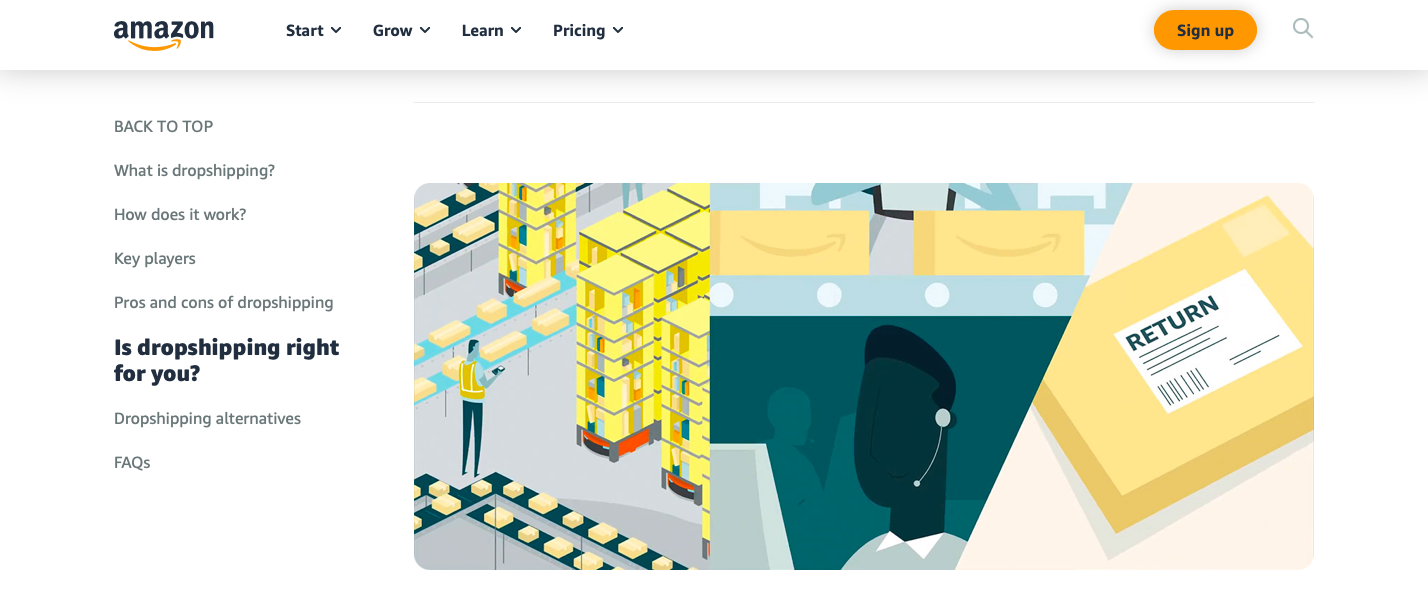Dropshipping is an order fulfillment option that allows e-commerce businesses to outsource the purchase, storage, and delivery of products to a third party. This method of order fulfillment appeals to entrepreneurs looking for low overhead and low capital investment, but it can be expensive.
In the previous article, we told you the main advantages of dropshipping. Today we will discuss whether dropshipping is right for you in 2022.

Is dropshipping right for you in 2022?
It all depends on your business. Here are a few questions to ask yourself if you’re considering dropshipping.
- How do you want to develop your brand?
Your brand is the look and feel of the customer-facing aspects of your business. Creating a memorable brand experience can help increase customer loyalty.
While you can create a branded online experience, dropshipping gives you less control over product quality, shipping experience, and final packaging aesthetic. If products and packaging fail to meet expectations, the customer may decide not to buy your brand again.
Dropshipping vendors often offer few options for product customization. This limitation can make it difficult for your brand to stand out from the competition.
- How much do you want to control product quality?
Product quality can have a big impact on other aspects of your business such as customer acquisition, brand loyalty, and returns. While you can check the quality of products at the beginning of your drop shipping relationship, you will likely have limited control over the quality of the items you sell on an ongoing basis.
If the products do not meet customer expectations, your business may receive negative customer reviews.
- How quickly do you want to start shipping goods?
E-commerce customers generally expect fast delivery. In a recent survey, nearly 84% of those surveyed consider delivery an integral part of their online shopping experience.
Long delivery times can negatively impact your business. When working with a dropshipping supplier, check their standard shipping charges and delivery times.
For merchants looking for fast order fulfillment services, a service like FBA can be valuable.
- What capital do you have access to?
In some cases, the dropshipping business model allows you to delay purchasing a product until customers place orders. This can make dropshipping attractive to entrepreneurs who want to start a business with limited inventory investment. Some alternatives, such as third-party fulfillment, also allow you to start and run your business with less capital compared to finding, storing, and delivering groceries on your own.
- What is your target rate of return?
Compared to other business models such as owning a retail store or setting up your own fulfillment center, dropshipping has a lower barrier to entry. Unfortunately, this could mean more competition for your business.
The playing field can be very competitive for dropshipping businesses. Dropshipping sellers are usually able to offer items at low prices because they have invested so little. If you are using dropshipping for your business, you may be making low profits.
You may be able to overcome some of these challenges if you position your business in a niche outside of some super-competitive area. Find potentially profitable or less competitive niches through market research, networking and sales. Or invest in your brand differentiation.
- Are you ready to deal with supply and inventory issues?
If you decide to use dropshipping, you may have little or no control over the supply chain. Production delays can determine how many orders your dropshipper can fulfill. We hope that the need to disappoint your customers by telling them that an item is out of stock is the exception, not the rule. Finding products through multiple dropshipping services is one way to avoid running out of stock. When one supplier doesn’t have the product you need, you can rely on another. However, dealing with multiple suppliers complicates logistics and order fulfillment, which can defeat the purpose of a dropshipping strategy.
- How will you process refunds, returns and replacements?
Refunds are an inevitable part of an e-commerce business. Sometimes the return process can be as simple as a customer contacting you about an item they would like to return. The customer ships the item back, then you refund the customer and contact the dropshipping supplier to credit or refund you. But this is not always the case.
Be prepared for more complicated return and replacement processes. Take the time to understand how the dropshipping service handles returns before creating your return and refund policy.
Think through the steps of an e-commerce transaction.
Here are some examples of questions to ask before signing a contract with a dropshipping supplier:
- Who is responsible for defects?
- Who covers the cost of return shipping for defective products?
- What are the supplier’s restocking fees?
- What is the return window for customers?
Questions like these can help you understand your dropshipping agreement and help you get a clearer picture of potential costs before you make changes to your business model.
- How will you solve questions and problems related to the fulfillment of orders?
Even if you are not physically handling the products, you may still need to answer customer questions and concerns about shipping, delivery, or product quality.
It would seem that a slight misunderstanding with your dropshipping supplier can lead to negative reviews and poor customer experience. To avoid this, consider the entire buying process from the customer’s point of view.
Pay special attention to the following aspects of customer experience:
- Do customers receive a notification after ordering when to expect their orders?
- Do the parcels arrive within the expected time frame?
- Do the products arrive in good condition?
- Is the packaging a good reflection of your brand?
Optimize each of these touchpoints to deliver a positive customer experience that will help you generate positive reviews and build brand loyalty.
0

